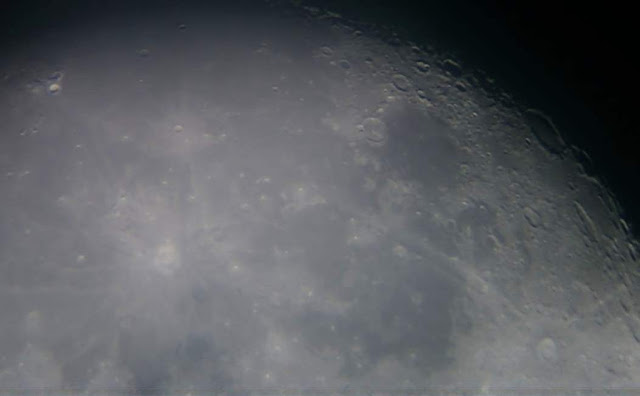Binoculars are fantastic to look at the sky. The small increase is fully offset by the large field of view, providing fantastic images that illuminate both eyes of the beholder, against only one of the telescopes. And when we go looking for a pair of binoculars, so we were tempted by bigger lenses, like 70 or 80mm. But unfortunately many people says that they are too heavy and therefore we, sedentary nerds, will not have the strength to carry these monsters for more than a few minutes.
A miracle solution, of course, is on a tripod. I read it all the time on forums Astronomy. So if you dropped with a parachute on my blog here that is looking for binoculars and tripods, before you rush to buy a site binoculars 20x80mm three pounds, thinking they have wonderful nights of observation using a tripod, I wanted make some notes.
I've had the experience of using a binocular with tripod and have to say: it was horrible. Unlike refractor telescopes normal binoculars does not come with a diagonal of 90 degrees, which allows the observer to look down or up forward when you're watching the sky. And that, believe me, generates a tremendous discomfort. Moreover, if you want to look up using the tripod, so this will have to be taller than you. In my case It is not easy to find tripods over six feet, my height.
The solution would be to use the tripod while sitting in a chair, but you will soon realize that you'll got totally immobilized, taking the binoculars to his best quality is the ability to wander freely across the sky in a few minutes.
In astronomy the best viewpoints are in the highest places of the sky. The farther the horizon less atmosphere the light of the star have to cross to get to your eyes, which makes a big difference. I spent a few months using a binocular on a tripod until I realized that it was legal for use on terrestrial objects, but for astronomy he soon became useless.
A good and great binoculars for astronomy would be like the following, which has 90 degree diagonal materials, providing the comfort needed to observe objects higher on the horizon, but unfortunately these devices are extremely rare in Brazil (my country) and also very expensive.
 |
Binocular prisms with large diagonals of 90 degrees, which ensures comfort in the observations. Image http://www.teleskop-express.de/
|
The tip I give is: if you do not have binoculars and want to buy one to start astronomy, does not fall into the illusion of buying a unit of three pounds and a tripod thinking that all your problems will be solved. Stay in a unit with a maximum 60mm, but know his weight before buying. In the end, I must know that the a friendly binoculars of the astronomer will always be 50mm, with a maximum increase of 10 times, which will be always with you and will be always at hand to study and contemplate the sky, ensuring comfort and priceless hours of observation in a goodnight.
Another problem related to tripod and binoculars is that will not be any small tripod with 5mm thick legs that will let you good observations. The tripod has to be strong and firm not to shake too, so it will not cost cheap. In the end, the binocular along with a good tripod will cost more than 1000 dollars. If dealing with a encumbrance of these, at this price, then leave immediately for a telescope.
But wait, all is not lost. There is an interesting solution, in my opinion, if you are able to do, can solve the problem and make the observation of the sky with binoculars on tripods quite enjoyable. It would make an apparatus as shown below, with a mirror-aligned binocular, playing the prism diagonal. I imagine that with a device like the view with binoculars should be very fun and comfortable, the way it should be. Only well worth it.
 |
| A mirror placed below the binoculars, as this interesting homemade tripod, lets bring binoculars with the necessary comfort. Image http://www.swindonstargazers.com/ |











